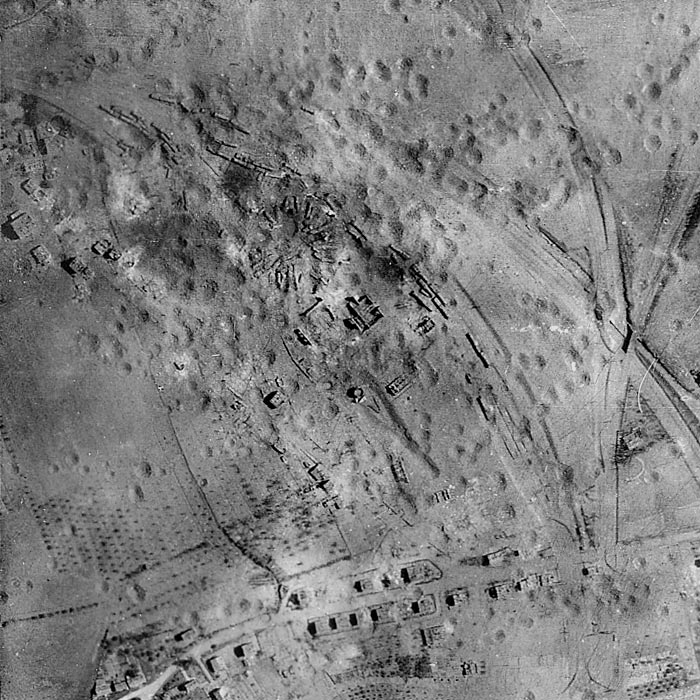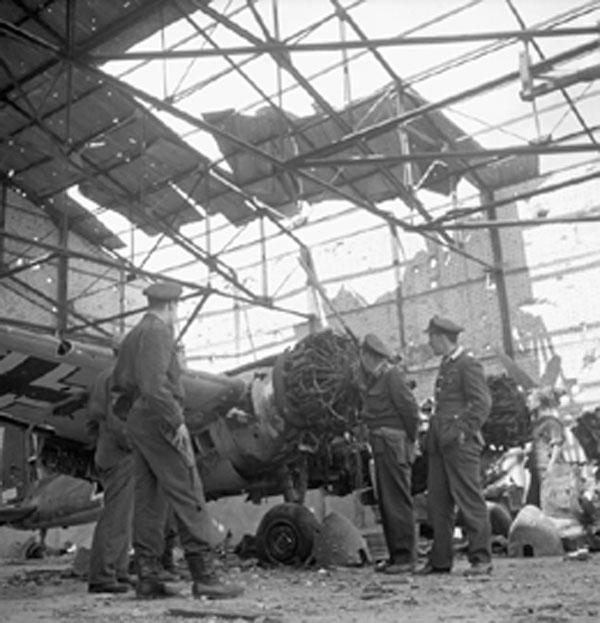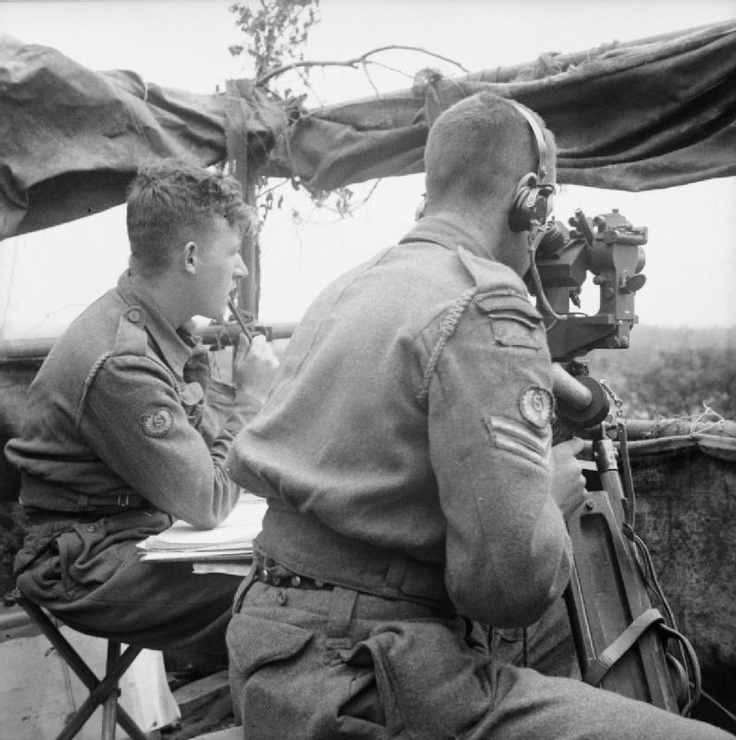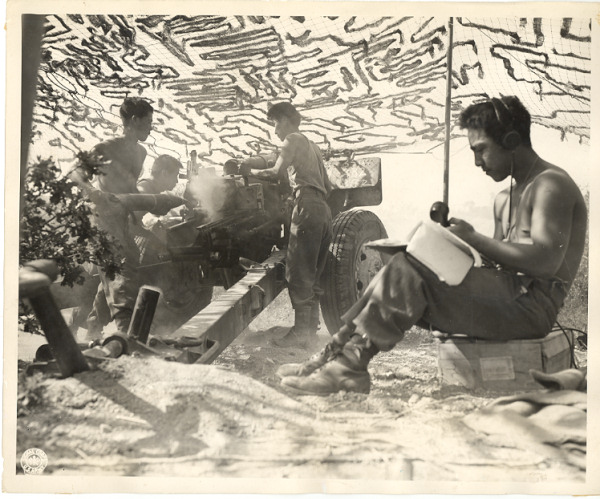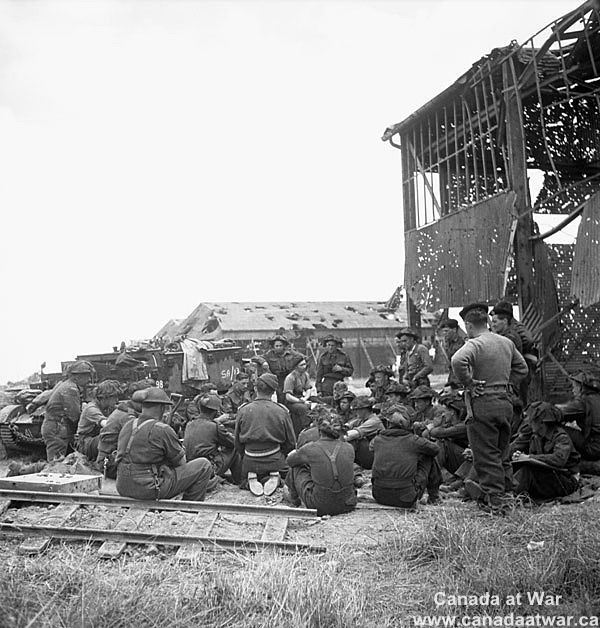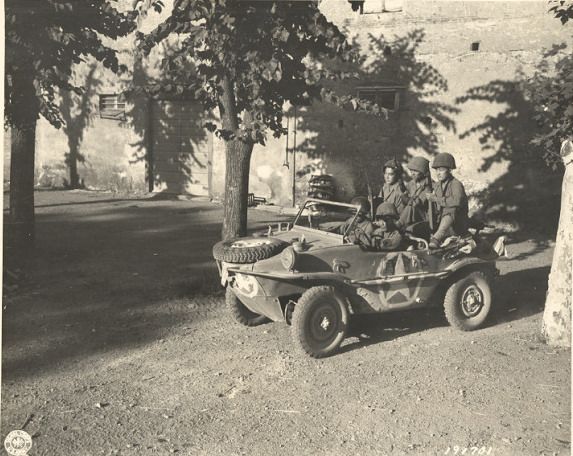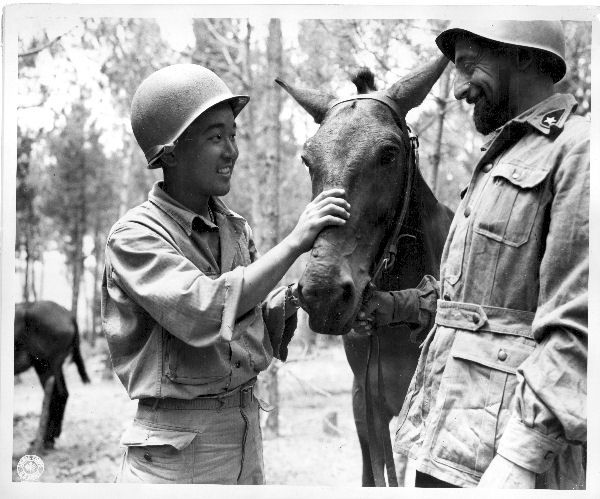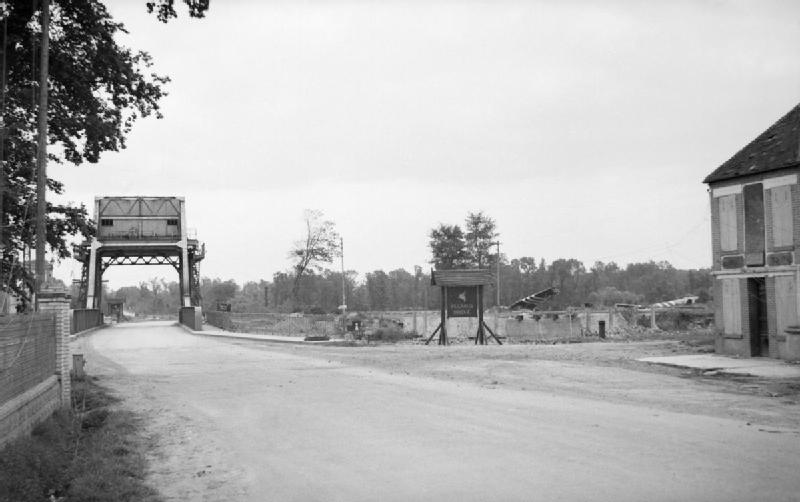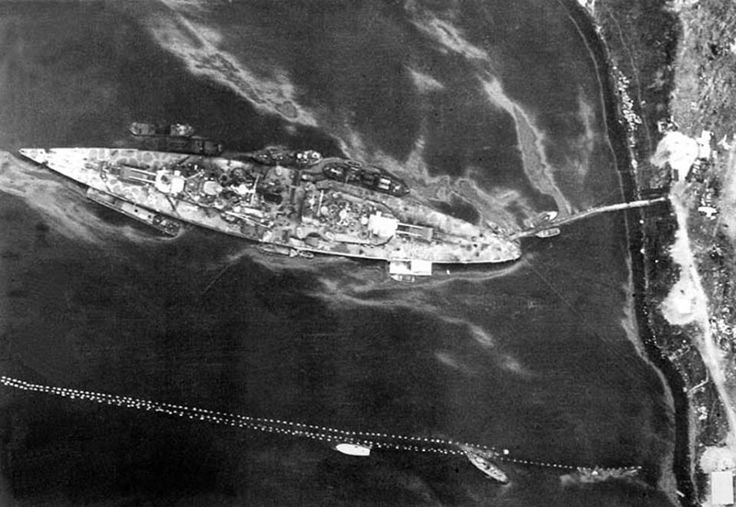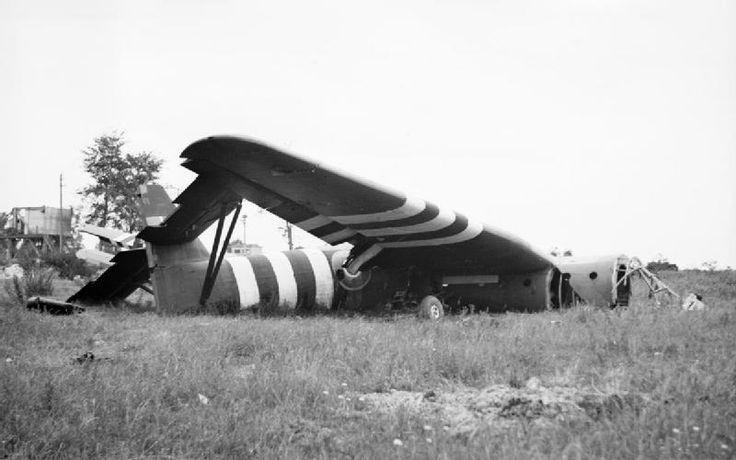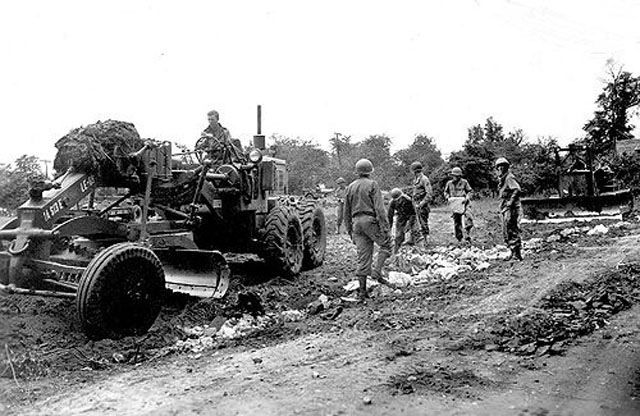Air Operations, Europe
The RAF deploys the Gloster Meteor, the sole jet aircraft to be used by the Allies during the war.
RAF BOMBER COMMANDDaylight Ops:
- 222 aircraft of Nos. 4, 6 and 8 Groups bomb a storage dump at Thiverny but the target is covered in cloud and no results are seen. Included in the aircraft total are 168 Halifaxes, 46 Lancasters and 8 Mosquitos. 18 Lancasters and 5 Mosquito of No. 8 Group use Oboe to bomb the Rollez launching site.
- There are no losses.
- 153 Lancasters and 6 Mosquitos of Nos. 1, 3 and 8 Groups attack the important railway yards at Vaires on the outskirts of Paris. The target are is completely covered in cloud and the Master Bomber orders the attack to be abandoned after 2 Mosquitos have marked and 12 Lancasters have bombed.
- No aircraft are lost.
- 378 Lancasters and 7 Mosquitos of Nos. 1, 5 and 8 Groups attack railway targets at Culmont, Revigny and Tours. Culmont and Tours are accurately bombed, but cloud interferes with the all-No. 1 Group raid at Revigny and only half the force bombs.
- 10 Lancasters are lost on the Revigny raid and 2 on the Culmont one.
- 196 Halifaxes, 17 Lancasters and 17 Mosquitos of Nos. 4, 6 and 8 Groups attack 4 flying bomb launch sites. All the targets are hit with the raid on the Bremont les Hautes being particularly accurate.
- There are no losses.
- 168 aircraft from all Main Force groups and Nos. 93 and 93 Groups (OTU) make a diversionary sweep over the North Sea. 8 Mosquitos are sent to Homberg, 12 Halifaxes lay mines off Haligoland, and there are 32 Mosquito patrols and 32 RCM and 14 OTU sorties.
- There are no losses.
FRANCE:
- 131 3rd Bomb Division B-24s and 131 RAF Spitfire escorts dispatched against 10 V-weapons sites in the Pas-de-Calais area are thwarted by bad weather.
- Unable to visually attack assigned targets in and around Munich, 1,124 8th Air Force B-17s and B-24s, escorted by 717 VIII Fighter Command fighters, employ radar to conduct an area attack on the city of Munich.
- 27 heavy bmobers attack other targets of opportunity.
- 24 heavy bombers are lost, 297 are damaged
FRANCE:
- During morning and afternoon missions more than 300 IX Bomber Command B-26 and A-20 sorties are flown against fuel dumps, troop concentrations, and road and rail targets.
- 9th Air force fighters and fighter-bombers attack rail lines, bridges, motor vehicles, parked airplanes, and infantry and artillery emplacements in and around the battle area.
- 9th Air Force fighter pilots down 6 Luftwaffe fighters between 0955 and 1545 hours.
ITALY:
- Operation MALLORY MAJOR opens with attacks by 12th Air Force B-25s and B-26s against bridges spanning the Po River.
- XII TAC A-20s attack ammo dumps, and fighter-bombers attack small boats and barges on the Arno River as well as road and rail lines, gun emplacements, ammo dumps, and motor vehicles in and around the battle area.
FRANCE:
- More than 420 15th Air Force B-24s attack marshalling yards at Miramas and Nimes, and bridges spanning the Var and Theoule Rivers.
CBI
In the NCAC area, the Myitkyina TF, with air support, makes a major effort against Myitkyina, but the attack fails. As a result of poor air-ground liaison some bombs hit friendly forces.
>On the Salween front, the Japanese in the Sung Shan garrison continue to repulse the attacks of 2 Chinese divisions. A 2-week lull ensues and the Chinese 8th Army breaks off the attacks.
[Eastern Front
The great Russian offensive grows in scale and intensity. Moscow announces that the 2nd Baltic Front has launched a series of attacks between Nevel and Ostrov, south of Lake Peipus, capturing Idritsa, west of Velikiye Luki along the railway line to Riga.
NORTHERN SECTORThe 2nd Baltic Front rips a 50-mile hole in the 16th Army, the 10th Guards Army advancing 10 miles into the German rear. The 3rd Shock Army has also broken through, reaching the Velikaya River while the 4th captures Drissa. Idritsa falls to the 4th Shock Army of the 1st Baltic Front.
The Stavka strengthens the 1st Baltic Front in its push toward the Gulf of Riga, allocating the 51st and 2nd Guards Armies from the reserve.
LITHUANIAThe Soviet 5th Army enters Vilnius.
CENTRAL SECTORFurious battles rage at Vilnius as the 5th Army forces its way into the city.
SOUTHERN SECTORKoniev begins probing attacks against the junction of 4th and 1st Panzer Armies. The Germans immediately pull back their forward units to the main defense belt but are observed. Gambling that the Germans will not expect an attack without the usual arty barrage, Koniev decides to attack on the 13th.
[Italy
The US IV Corps, advancing on Leghorn, takes Castiglioncello. On the right of the line the 34th Div runs into serious difficulties, while the 88th, supported by effective artillery fire, takes Laiatico.
Operation MALLORY MAJOR, a major sequence of Allied air attacks against the Po bridges to impede German re-supply efforts, is launched.
[New Guinea
In the Aitape area, Gen Gill, CG of the 32nd Division and of the Eastern Sector, takes control of the PERSECUTION Covering Force, relieving Gen Martin, who becomes commander of the Eastern Sector. Gen Gill sets up headquarters at the Tiber and prepares for an attack to recover positions along the Driniumor, dividing the covering force into 2 groups: North Force, consisting of the 124th Infantry (less the 2nd Battalion) reinforced by the 1st Battalion of the 128th Infantry; South Force, consisting of the 112th Cavalry and the 3rd Battalion of the 127th Infantry. The 2nd Battalion of the 128th Infantry, holding Tiber while reorganizing is held in reserve. Company B, 128th Infantry, moves from Tiber to Anamo in preparation for a general attack. After dark, the Japanese attack the 2nd Battalion, 128th Infantry, but are forced to withdraw.
On Biak, about 200 Japanese troops escape from the Ibdi Pocket.
[Pacific
In submarine action with US TG 17.16 patrolling the South China Sea, the US submarine Apogan (SS-308) attacks the Japanese army cargo ship Nichiran Maru but is damaged when she is rammed by the cargo ship Mayasan Maru. Damage sustained force the Apogan to terminate her patrol. The US submarine Piranha (SS-389) sinks the Nichiran Maru (6504t).
[Western Front
The US 1st Army sends the 101st Airborne Div back to England for a period of rest and to train new recruits. While the VIII Corps makes considerable progress southward toward the Ay and Sèves Rivers, the VII is in difficulties along the Carentan-Périers road. The US XIX Corps' offensive against St Lô goes on, but at a reduced pace, as the 30th Div is in trouble in the Pont-Hébert sector, as is the 116th Regt of the 29th Div west of that town. All the objectives on the features called Height 192, northeast of St Lô, are captured by the 2nd Div of V Corps.[WF]
Brig-Gen Theodore Roosevelt, Jr, CGM, dies of a heart attack.
[Images from July 12, 1944
|
|
|
|
|
|
|
|
|
|
|
|
T-34-85 from the 226 Tank Regiment |
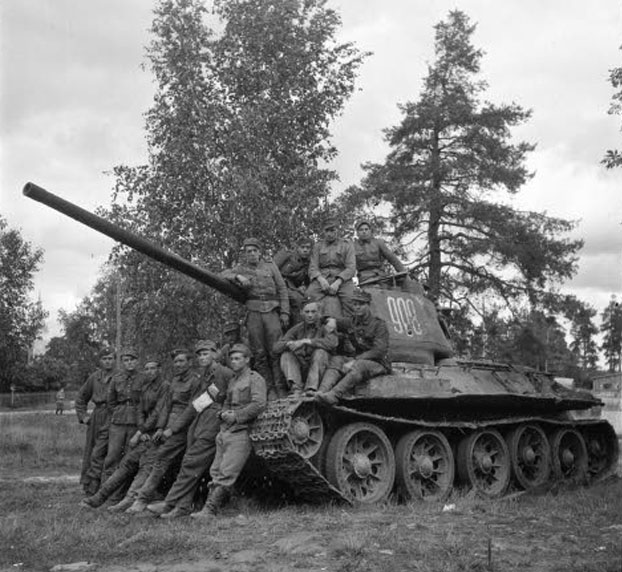 |
